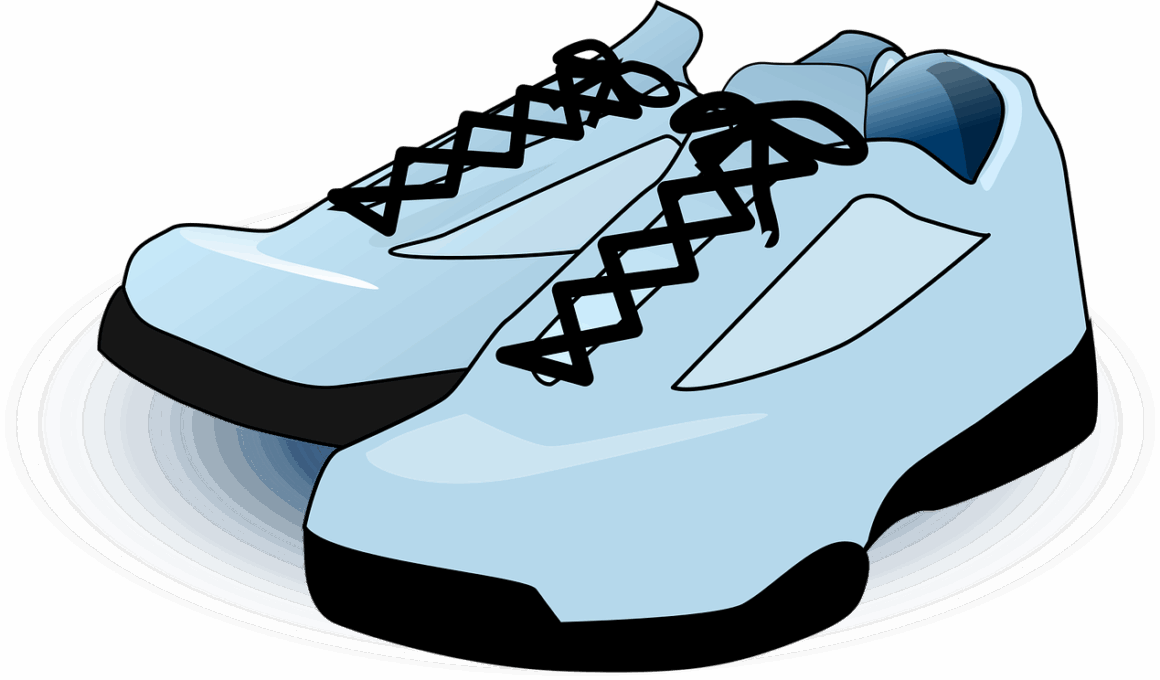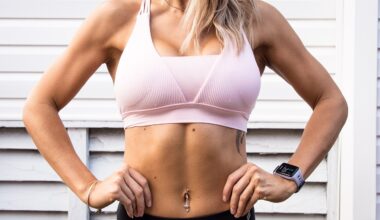How to Choose the Right Athletic Shoes for Young Athletes
Choosing suitable athletic shoes is crucial for young athletes to perform their best while ensuring foot health. When selecting shoes, consider factors such as the sport type, foot structure, and individual preferences. For instance, different sports like basketball, running, or soccer require distinct designs that provide appropriate support. Most importantly, understanding your child’s foot type can help you select shoes that fit well and reduce injury risk. Flat feet, arched feet, and wide feet will each need specific shoe styles. Also, when trying on shoes, ensure there is adequate space in the toe box to avoid discomfort. Lightweight shoes can boost agility, while supportive ones improve stability. It’s advisable to measure your child’s feet regularly, as they may grow quickly. Look for breathable materials that keep feet dry, as moisture can lead to blistering and discomfort during activity. Another essential aspect is to assess the shoe’s grip; different surfaces require varying tread patterns to optimize traction. Prioritize shoes that offer a balance between comfort and performance, ensuring both functionality and enjoyment during sports.
Understanding Foot Types for Optimal Fit
A young athlete’s foot type significantly influences the choice of athletic shoes. There are three primary foot types: flat, neutral, and high-arched. For those with flat feet, shoes with extra cushioning and support in the arch area are essential to reduce strain. Neutral feet generally do well using stability shoes that provide moderate support, while high-arched feet benefit from shoes with maximum cushioning to absorb impact. To determine foot type, a wet foot test can be helpful; simply wet the foot and step onto a flat surface to analyze the footprint. Individuals with flat feet will show minimal arch, those with neutral feet will reveal a standard arch, and significantly high arches will display a narrow footprint. Additionally, watching for signs of discomfort, such as fatigue or pain during athletic activities, can indicate the need for re-evaluation of shoes. Furthermore, the shape and width of a foot can differ even among the same type. Therefore, it’s advisable to try on various brands and styles to ensure the best fit, leveraging recent sizing charts to find suitable options for young athletes.
When selecting athletic shoes for young athletes, limit your choices to reputable brands known for quality and innovation. Popular options often produce a variety of designs tailored for specific activities, ensuring improved performance. Brands typically offer specialized lines for running, court sports, and team games that come into unique features, such as lightweight materials and strategic padding for comfort. For instance, running shoes often emphasize cushioning and shock absorption, vital for repeated impacts. Volleyball or basketball shoes emphasize ankle support and stability to reduce injury risks associated with sudden movements. Always consider trying various models within a brand, as sizing may vary. Familiarize yourself with returns policies, allowing easy exchanges if the initial selection doesn’t suit your child’s needs. Online reviews can offer insights into comfort and performance from other parents and athletes, helping to guide choices. Social media often showcases popular styles among junior athletes, providing hints on trendy options. However, make sure that performance is prioritized over aesthetics to ensure safe participation in sporting pursuits.
Trying Shoes on for the Right Fit
Proper fitting of athletic shoes is essential for ensuring comfort and maximizing performance. When shopping, have your child try on shoes at the end of the day when their feet are slightly swollen; this ensures a better fit. Always wear the type of socks they plan to use for activities during fittings, as different sock thicknesses can alter fit perceptions. Check for wiggle room; it’s recommended to maintain a thumb’s width of space between the longest toe and the shoe’s end. This allows for comfort during movement, decreasing the likelihood of blisters and soreness. Furthermore, have your child walk or jog in place to assess the fit under motion; pay attention to any pinching or pressure points that could suggest an incorrect size. Additionally, consider the shoe’s lacing system, which should allow for adjustments that secure the shoe snugly without compromising circulation. It’s often best practice to select shoes that your child can adjust independently as they grow, gaining both confidence and autonomy in their gear. This attention to detail goes a long way in supporting their sporting journey.
Maintenance of athletic shoes is essential to prolong their lifespan and performance. After each use, it’s advisable to air out shoes to prevent moisture accumulation and unpleasant odors. Inner soles can often accumulate sweat and dirt; removing and cleaning them can enhance hygiene and comfort. Additionally, inspect the shoes for wear and tear, particularly in areas that experience the most friction. Signs of significant wear may indicate the need for replacement to prevent injuries caused by inadequate support. Rotating between two pairs of shoes, if possible, allows each pair additional time to decompress, reducing rapid wear. Always store shoes in a cool, dry place away from direct sunlight, as excessive heat can damage materials and cause deterioration. For young athletes involved in multiple sports, consider having sport-specific shoes dedicated to each activity, ensuring they have proper support wherever they perform. This practice not only enhances performance but also aids in developing a habit of caring for their equipment properly. Investing in a good pair of athletic shoes encourages a love for sports and physical activity while keeping them safe.
Budget Considerations for Athletic Footwear
When shopping for athletic shoes, budget considerations may play a significant role in decision-making. While it’s tempting to opt for the cheapest option, significant differences exist in quality and performance across price ranges. Affordable shoes can suffice for general recreational use, yet dedicated athletes often benefit from investing in specialized athletic footwear designed with superior technology and durability. Research reveals that high-quality shoes can reduce injury risks, leading to better performance and future savings on medical bills. Brands frequently offer sales or discounts at various times of the year, making it easier to find quality footwear at reduced prices. Exploring outlet stores or clearance sections might present great value on previously released models, which typically retain high performance without current season pricing. Another option is to consider second-hand or refurbished athletic shoes for cost savings, provided they are in good condition. Be cautious, though, as insufficient cushioning or support may be concerning, potentially leading to foot injuries in young feet. Balancing cost with quality ensures young athletes have the best chance at success while remaining comfortable and safe.
In conclusion, selecting the right athletic shoes for young athletes is a multifaceted process that affects their performance and health. Understanding foot types, choosing reputable brands, and ensuring a proper fit all play crucial roles in this decision. Remember that young athletes’ feet are still developing, influencing their shoe requirements as they grow. Proper maintenance will extend the life of their shoes while supporting physical activity and sports involvement. Involving young athletes in the selection and fitting process builds their interest in footwear, encouraging them to express their preferences yet remain pragmatic regarding performance needs. Allocate time for research on current trends and technology in footwear to stay updated on suitable options. Establishing a budget allows for flexibility while seeking quality products essential for safe sports participation. Investing in good athletic shoes fosters enjoyment in pursuing sports, potentially enhancing performance while mitigating injury risks. By taking these steps, you can help nurture a lifelong appreciation for active healthy living in young athletes, laying the foundation for athletic success in their future endeavors.


